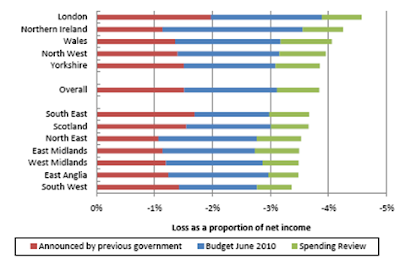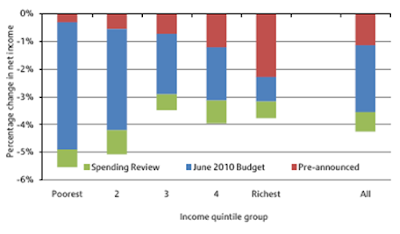.402ZInvestment in Education Would Cut the DeficitBy Michael Burke
The mobilisation by students and their supporters in recent weeks has begun to transform the political situation in Britain. Confusion, passivity and fear are being gradually replaced with indignation, solidarity and mobilisation. In addition, the protests have begun to lay bare the actual thrust of government policy, exposing the truth behind the rhetoric of the Tory-dominated Coalition.
The springboard for the Tory-led coalition attack on students and their families is the Browne Report, commissioned by the previous Labour government. Given Browne’s record at the head of BP, it is hardly surprising that the outcome should be fully of shoddy shortcuts, hugely damaging to people’s lives and to wider society.
In the Foreword to his Report, Browne states that the competitive edge of the English higher education system is being challenged by other countries who are increasing their investment in Higher Education Institutions and who are educating more people to a higher standard. All this is true, as we discuss below. However, publication of the Browne Report has been the platform from which the current government has launched a policy that involves the removal of the bulk of the £3.9bn block grant for teaching in higher education. It will be replaced by a system of private funding via significantly increased fees and a marketisation of the bulk of the higher education system.
All of this is cast in the framework of the ‘sustainability’ of government finances- implicitly the current or prior systems were ‘unsustainable’. The former consensus that education was a public good, providing both benefits to society as well as the individual has disintegrated under the under the acid assertion that we have no money.
This is despite the fact that the budget deficit is already falling, following the modest spending measures of the 2009 Labour Budget. This is shown in Table 1 below which shows tax revenues have risen sharply in the first 7 months of the current Financial Year due economic expansion created by the last Labour government’s 2009 budget.
Table 1


As a result, the previous Financial Year deficit of £155bn is much lower in the present year, on course for a deficit of approximately £140bn, compared to a Treasury forecast in December last year of £178bn.1
Failing Competitiveness
Browne is right to raise the issue of falling competitiveness. In Marxist terms a key factor in total productivity is the skill of labour. One aggregate measure of that currently is the proportion of the population participating in higher education. In the chart below, the outcome for what the OECD designates ‘Type A’ higher education (equivalent to British university, non-vocational degrees) are shown. Britain’s position has slipped to below the average for the OECD as whole.2 Further, despite the previous government’s commitment to a 50% graduation rate, the graduation rate stagnated between 2000 and 2007.
Chart 1
In contrast, almost a dozen other countries have seen their graduation rates rise appreciably. The debate on sources of funding and competitiveness should also be informed by the fact that the most marketised system of education exists in the United States, where stagnating graduation rates have seen it slip towards the lower end of education league tables over a 12-year period.
The number of people with university degrees or other tertiary qualifications has risen on average in OECD countries by 4.5% each year between 1998 and 2006. In Ireland, Poland, Portugal, Spain, and Turkey, the increase has been 7% per year or more. Of these, Portugal has the highest contribution of private funding for tertiary education at 33%, the lowest Ireland with 15%. This compares to the US, where two-thirds of funding for higher education comes for private sources (in Britain, before the latest policy is implemented, the proportion was 36%).
Browne has correctly indentified a key failing- the relative failure of British funding for higher education. But the policy adopted will only exacerbate that failing.
Returns On Investment in Education
The above facts highlight the central fallacy of a policy based on the privatisation of education spending; that the high returns to the private sector from investment in education inevitably leads to an increase in private sector investment.
Much of the debate in Britain implicitly hinges on this assumption. It is certainly true that there are high returns to the individual (the private sector) from a higher education. In the OECD as a whole the private direct costs of a higher education and foregone earnings are $46,873 for a male and $45,808 for a female (2006 data, based on US$ PPPs) . The returns to the individual are on average $192,372 for a male and $137,340 for a female. These returns include higher net (after-tax) earnings as well as the monetary value of lower incidence of unemployment. The net returns are (the present value of) $145,849 for a male and $91,532 for a female. In Britain (in the same US$ PPP terms), the net returns to the individual are $207,655 for men and $152,858 for women.
Equality Is Part of the Solution
These gender discrepancies are themselves a function of the discrimination against women, who suffer both lower pay and are expected to act in the role of carer for both children and the elderly. The OECD does not provide, but we can be sure, that similar discrepancies exist because of the parallel discrimination against black and minority ethnic communities in relation to both pay and higher unemployment.
It is for this reason that it is claimed the individual should pay more for a higher education, as they clearly benefit from it. However, the claim that the privatisation of funding for higher education will increase the rate of investment is not supported by international evidence, cited above. It also ignores other factors especially the deterrent effect of raising the cost of education. The returns are also policy driven – dependent on the government’s willingness to capture a fair proportion of those private returns through a progressive tax system.
Further, a significant dent in the deficit could be achieved by a policy that would cost the government nothing- equal pay and job equality for women, and the same for black and ethnic minority communities. The government’s share of that significant increase in incomes through taxation would benefit the whole of society.
Public Returns On Investment
But the debate has largely ignored the returns to the public sector from investment in higher education. These are just as substantial.
For the OECD as a whole the average public cost of a tertiary education (male) is $32,949 and $31,830 (female) including both direct educational costs and foregone tax revenues while the student is in education. But the gross returns to the public sector, in the form of taxes, social contributions and lower unemployment benefits are $119,353 and $84,266 respectively. The net returns are $86,404 and $52,436 respectively. (The net benefits are lower than gross benefits minus costs, as the OECD applies a 5% annual interest rate discount over the period of the returns). For Britain, this net present value of investment in higher education for men is $95,318 and for women is $82,289. Put another way every £1bn invested in higher education yields £3.36bn in a return to government finances, so providing a net present return of £2.34bn.
It is for this reason that the OECD headlined the publication of Education at a Glance 2010, ‘Governments should expand tertiary education to boost jobs and tax revenues .’ This may be summed up as investment, not cuts for higher education.
This is shown in the chart below – where the blue line represents the public cost in investment in higher education, and the grey line the public returns. The data alongside is the net present value of that investment in US$ PPP terms.
Chart 2

Even these may be severe underestimates, as they only take account of income-related taxes and disregard the taxes derived from the consumption or savings of those higher incomes, which, depending on the tax regime, may be nearly as high again.3
Education & Deficit-Reduction
The public sector finances benefit to a very significant degree from the investment in higher education. The rate of return on that investment is a 220% for males and 252% for females.
This gender disparity is accounted for by the unequal participation of men and women in the workforce as well the inequality of pay for those who do. Where the employment rate of graduate women is higher than that of men – France, Portugal and Turkey both the net and gross returns to the public sector are higher for females than for males. Therefore the public sector has a direct material interest in increasing both the employment and relative pay of women in the workforce. The same argument applies to black and ethnic minority communities- equal pay and access to jobs would lower the deficit.
Increasing both access to and income equalities from higher education will also generally benefit the public sector finances. These can be achieved by increasing numbers in higher education as well as in ensuring the fully progressive nature of the taxation system.
The current level of investment in Britain in education is below the OECD average of 6% of GDP. The Tory-led government’s plan is to cut education spending (current and capital budgets) from £57.1bn4 in 2009/10 to £57.3bn in 2014/155, a cut in real terms of over 12% based on their own inflation forecasts. Given rising school rolls and the aspiration of increased access to higher education, real spending per pupil will decline by at least 18%.
This real cut will deepen to approximately £7bn by 2014/15. The accrued lower return to government finances based on the (probably underestimated) OECD data above will be just under £16.4bn.
By the same token, increasing public sector investment in higher education will increase the public sector returns on that investment commensurately. Increased investment is an economic necessity. The OECD devotes a rising proportion of GDP to education investment, now reaching 6%. Yet British investment in education has not reached that level since a brief period in the 1970s and is now set to fall further.
Chart 3

It is clear that there is a benefit to public finances from investment in education, just as there is a negative impact from cutting investment. The logical conclusion is therefore to increase investment to address long-term structural economic requirements but also as part of a growth-oriented programme of deficit-reduction.
It should be equally clear that the Tory-led government is not focused on deficit-reduction at all. There is already talk of cutting taxes, as well as the continuation of sweetheart deals for companies like Vodafone, who can negotiate away the bulk of their true tax liabilities. Instead, education policy, is about transferring wealth from the poorest 90% to the richest 10% of society. This is fully in line with the strategic aim of this government – which is redistribution of income from the poorest sections of society to the richest sections of society from the poorest.
Sources
1. £152bn in the 12 months to October, from a peak of £160bn in March, and compared to a Treasury forecast (December Pre-Budget Report) of £178bn for the current FY, UK Treasury, public finances, 18 November 2010.
2. All OECD data from OECD, Education at a Glance. 2010 unless otherwise stated.
3. In 2007, income and social security taxes accounted for 34% of the total tax take, whereas consumption and property taxes accounted for 36%, OECD, Tax Database, http://www.oecd.org/document/60/0,3343,en_2649_34533_1942460_1_1_1_1,00.html.
4. Treasury, June 2010 Budget Redbook, Table 2.2.
5. Treasury, Comprehensive Spending Review, Tables A5 & A6.






Recent Comments